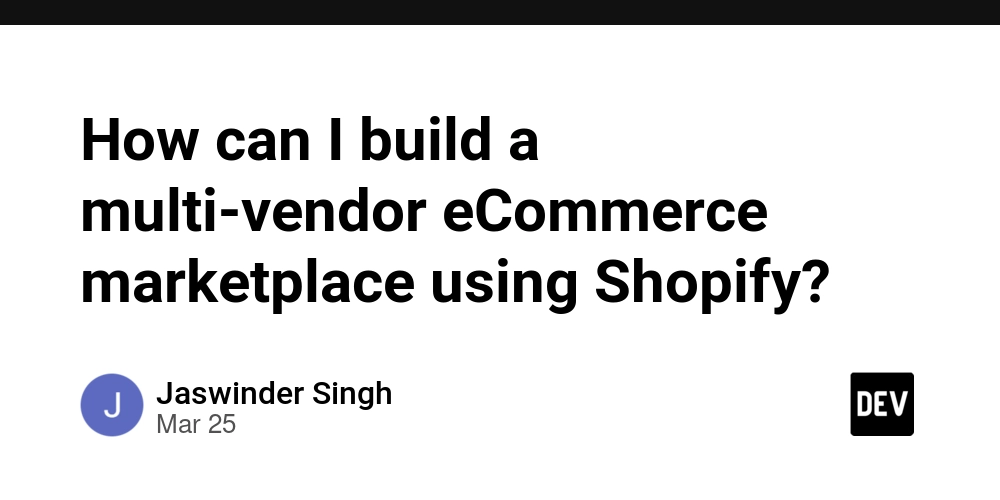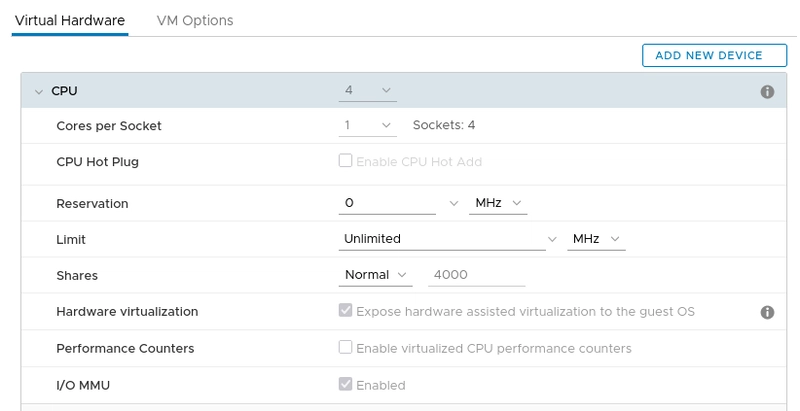How can I build a multi-vendor eCommerce marketplace using Shopify?
In today’s booming eCommerce industry, multi-vendor marketplaces like Amazon and Etsy are thriving. The good news? You can build your own multi-vendor marketplace using Shopify! While Shopify doesn’t have a built-in marketplace feature, you can leverage third-party apps to transform your store into a multi-vendor platform where multiple sellers can list and sell products. Step 1: Choose Shopify Plus or Basic Shopify Shopify doesn’t offer a built-in multi-vendor feature, but you can still create one using third-party apps like Multi Vendor Marketplace by Webkul or Multi-Vendor Marketplace by SpurIT. If you need advanced features and scalability, Shopify Plus is a better option. Step 2: Install a Multi-Vendor Marketplace App Webkul Multi Vendor Marketplace – Allows vendors to manage their own inventory. SpurIT Multi-Vendor Marketplace – Helps with order management and commission settings. Vendor Den – Offers seamless vendor onboarding. ** Step 3: Set Up Vendor Profiles & Commissions** Define commission rates (fixed or percentage-based). Allow vendors to register and manage their own products. Enable automated payouts via PayPal, Stripe, or other payment methods. ** Step 4: Customize Your Marketplace** Choose a Shopify theme that supports multi-vendor functionalities. Optimize your site for SEO & mobile-friendliness. Enable reviews, ratings, and seller profiles for transparency. Step 5: Set Up Payment Processing & Logistics Use Shopify Payments or third-party gateways for secure transactions. Offer multiple shipping options via Shopify Shipping or vendor-specific shipping rules. ** Step 6: Launch & Market Your Marketplace** Run Google & Facebook Ads to attract buyers and sellers. Use content marketing (blogs, videos, and social media) to generate traffic. Partner with influencers to build credibility.

In today’s booming eCommerce industry, multi-vendor marketplaces like Amazon and Etsy are thriving. The good news? You can build your own multi-vendor marketplace using Shopify!
While Shopify doesn’t have a built-in marketplace feature, you can leverage third-party apps to transform your store into a multi-vendor platform where multiple sellers can list and sell products.
Step 1: Choose Shopify Plus or Basic Shopify
- Shopify doesn’t offer a built-in multi-vendor feature, but you can still create one using third-party apps like Multi Vendor Marketplace by Webkul or Multi-Vendor Marketplace by SpurIT.
- If you need advanced features and scalability, Shopify Plus is a better option.
Step 2: Install a Multi-Vendor Marketplace App
- Webkul Multi Vendor Marketplace – Allows vendors to manage their own inventory.
- SpurIT Multi-Vendor Marketplace – Helps with order management and commission settings.
Vendor Den – Offers seamless vendor onboarding.
**
Step 3: Set Up Vendor Profiles & Commissions**Define commission rates (fixed or percentage-based).
Allow vendors to register and manage their own products.
Enable automated payouts via PayPal, Stripe, or other payment methods.
**
Step 4: Customize Your Marketplace**Choose a Shopify theme that supports multi-vendor functionalities.
Optimize your site for SEO & mobile-friendliness.
Enable reviews, ratings, and seller profiles for transparency.
Step 5: Set Up Payment Processing & Logistics
- Use Shopify Payments or third-party gateways for secure transactions.
Offer multiple shipping options via Shopify Shipping or vendor-specific shipping rules.
**
Step 6: Launch & Market Your Marketplace**Run Google & Facebook Ads to attract buyers and sellers.
Use content marketing (blogs, videos, and social media) to generate traffic.
Partner with influencers to build credibility.









































































































































































![[The AI Show Episode 142]: ChatGPT’s New Image Generator, Studio Ghibli Craze and Backlash, Gemini 2.5, OpenAI Academy, 4o Updates, Vibe Marketing & xAI Acquires X](https://www.marketingaiinstitute.com/hubfs/ep%20142%20cover.png)



























































































































![[DEALS] The Premium Learn to Code Certification Bundle (97% off) & Other Deals Up To 98% Off – Offers End Soon!](https://www.javacodegeeks.com/wp-content/uploads/2012/12/jcg-logo.jpg)


![From drop-out to software architect with Jason Lengstorf [Podcast #167]](https://cdn.hashnode.com/res/hashnode/image/upload/v1743796461357/f3d19cd7-e6f5-4d7c-8bfc-eb974bc8da68.png?#)






































































































.png?#)




.jpg?#)
































_Christophe_Coat_Alamy.jpg?#)
 (1).webp?#)









































































































![Rapidus in Talks With Apple as It Accelerates Toward 2nm Chip Production [Report]](https://www.iclarified.com/images/news/96937/96937/96937-640.jpg)






































































































































